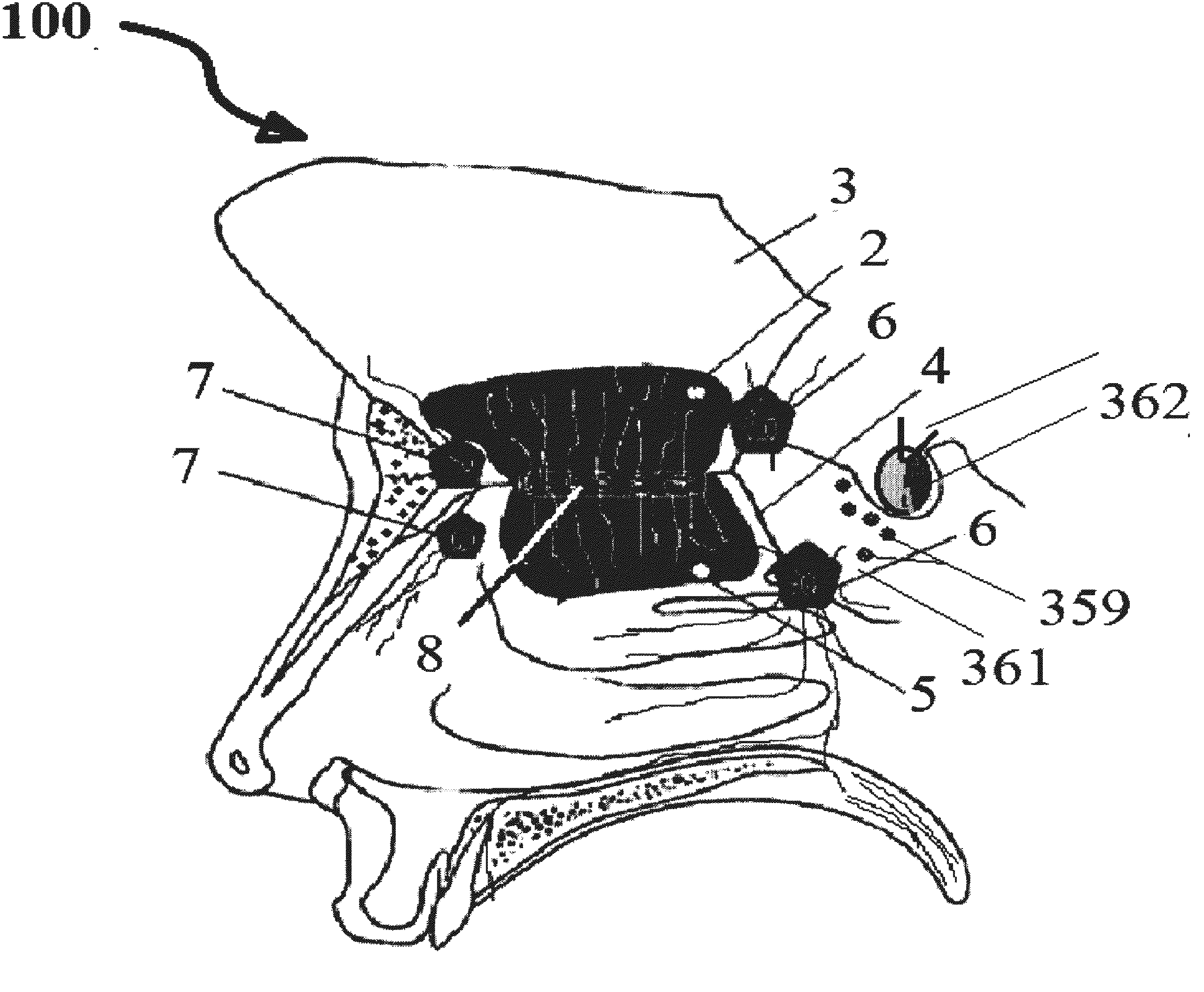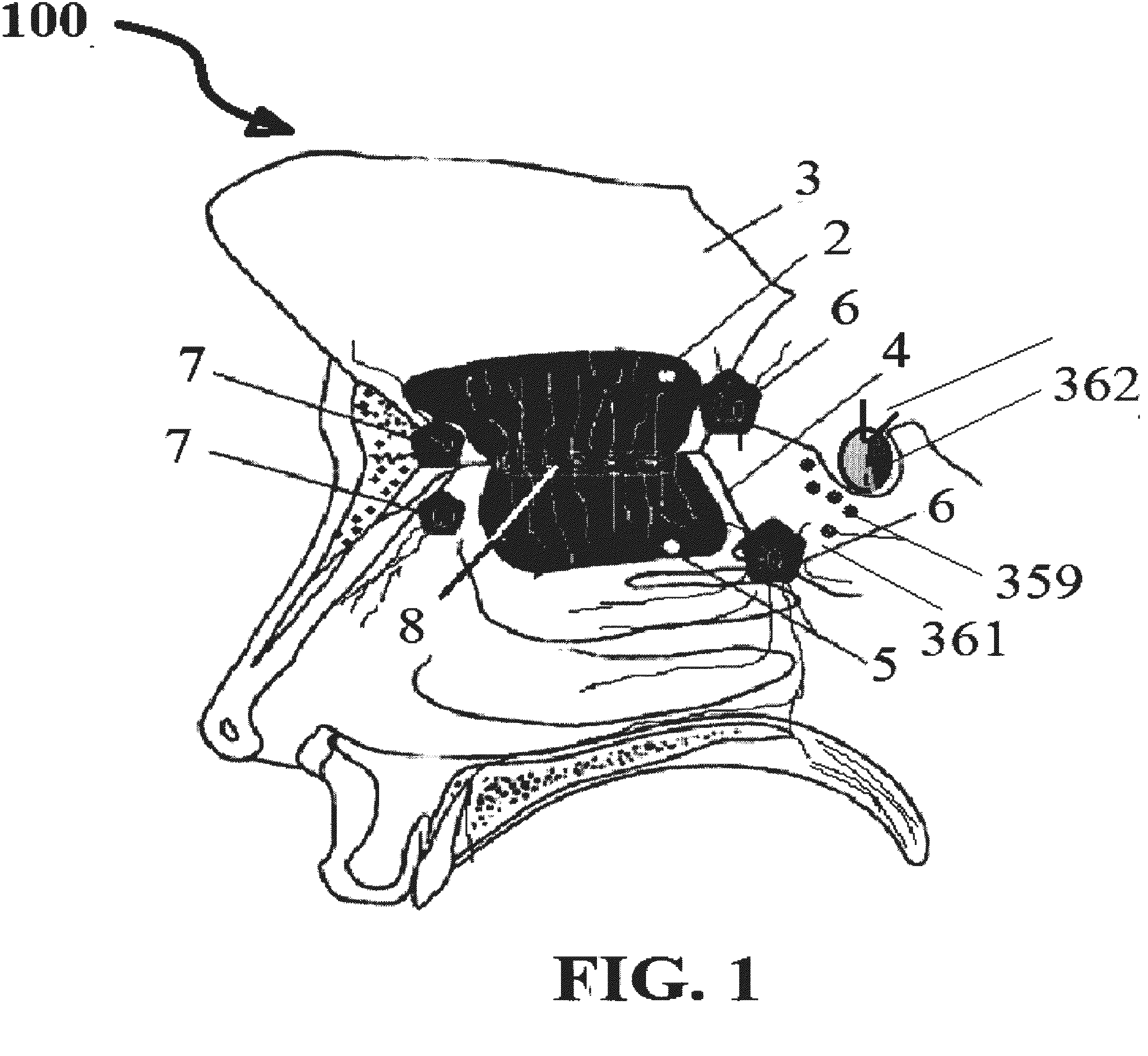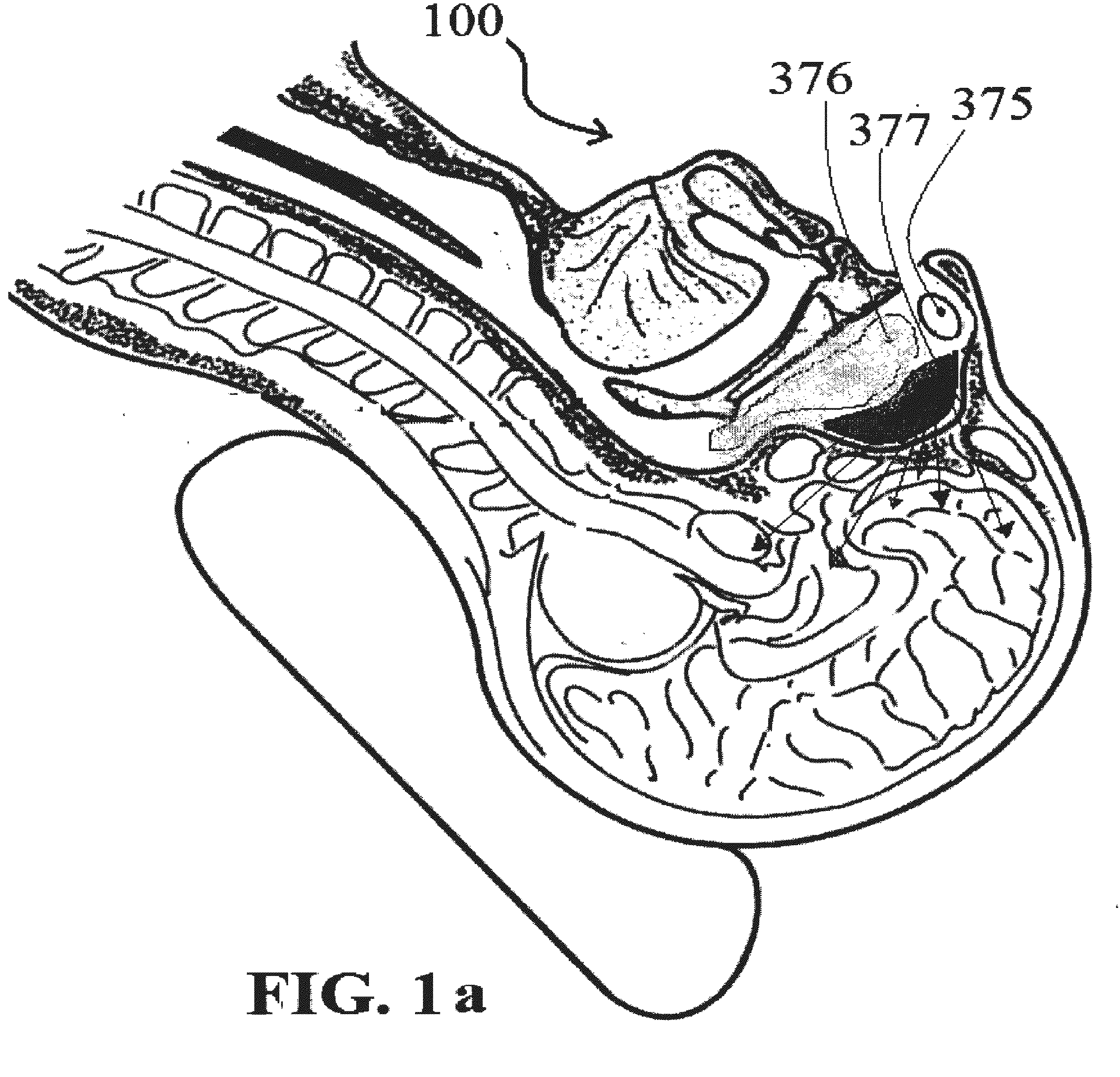Alzheimer's disease treatment with multiple therapeutic agents delivered to the olfactory region through a special delivery catheter and iontophoresis
a technology of iontophoresis and olfactory region, which is applied in the direction of drug composition, antibody medical ingredients, therapy, etc., can solve the problems of no available treatment to stop or reverse the progression of the disease, and it is unknown if any of the tested treatments will work, so as to reduce the amyloid beta (a) plaques, increase the level of neurons, and prevent the destruction of acetylcholine
- Summary
- Abstract
- Description
- Claims
- Application Information
AI Technical Summary
Benefits of technology
Problems solved by technology
Method used
Image
Examples
example 1
[0393]Preparation of Stock Solutions and Method of Olfactory Mucosal Administration[0394]a) Take 150 mg of bexarotene; dissolve it in a solvent such as alcohol, DMSO, Chloroform solvents with suitable carrier such as physiological saline or phosphate buffered saline. We have used DMSO in our study. This solution can contain thickening and solubilizing agents, such as glucose, polyethylene glycol, and polypropylene glycol and mixtures thereof. The final formulation contains 15 mg of bexarotene per ml of solution. The dose delivered to ORE on each side 10, 15, or 30 mg at a time.[0395]b) Then take 100 IU of rapid acting insulin and dilute it in 5 ml of normal saline, in which each ml contains 20 units of insulin. The dose delivered is 5, 15, or 20 IU at a time.[0396]c) Take 2.5 mg of Ketamine, and dilute it in 5 ml of saline, resulting in 0.5 mg per ml or 500 mcg of active ingredient per ml. The dose delivered is 150, 250, or 500 mcg at a time.[0397]d) Take 150 mcg of IGF-1 and dilute...
example 2
[0410]The patients called back one week later to the clinic. They are assessed for memory and cognition changes. The procedure described in example 1 was repeated if there are no complications. They are sent home with the home therapy kit or back to the place of their residence.
example 3
[0411]The patients called back three weeks later to the clinic. They assessed for memory and cognition improvements, and recorded. The procedure described in example 1 repeated. Then they were sent home with the home therapy kit.
PUM
| Property | Measurement | Unit |
|---|---|---|
| Mass | aaaaa | aaaaa |
| Mass | aaaaa | aaaaa |
| Mass | aaaaa | aaaaa |
Abstract
Description
Claims
Application Information
 Login to View More
Login to View More - R&D
- Intellectual Property
- Life Sciences
- Materials
- Tech Scout
- Unparalleled Data Quality
- Higher Quality Content
- 60% Fewer Hallucinations
Browse by: Latest US Patents, China's latest patents, Technical Efficacy Thesaurus, Application Domain, Technology Topic, Popular Technical Reports.
© 2025 PatSnap. All rights reserved.Legal|Privacy policy|Modern Slavery Act Transparency Statement|Sitemap|About US| Contact US: help@patsnap.com



